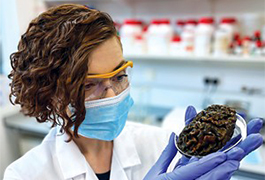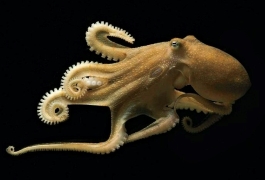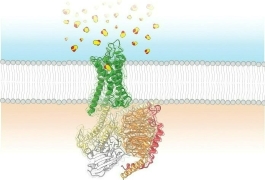Atomic News Roundup—January 2024
In this collection of research reported in ACS Axial and Chemical & Engineering News, we feature protective gloves, production of hydrogen from plastic waste, the harmful effects of sleep deprivation, and more.
Fast-heating gloves offer reusable protection
When it comes to personal protective equipment (PPE), most gloves and masks should be tossed after use to avoid contamination and degradation (see more on lab safety). But a new multilayer glove could someday replace more than 900 single-use gloves.
Closest to the hand is a heat-blocking layer of polyester and spandex. Next comes a nylon cloth layer, followed by a conductive layer of polyester and metallic fibers. A protective nylon film covers the outside of the glove.
To decontaminate the glove between uses, the wearer sends a current through it. The outer layer quickly heats up to 100°C to kill viruses and other microbes, while the wearer’s hand stays below 40°C. Masks and other PPE could be made from the same material, according to the Rice University team.
Read the full article in C&EN: Protective gloves heat up to kill viruses, keep wearer’s skin safe
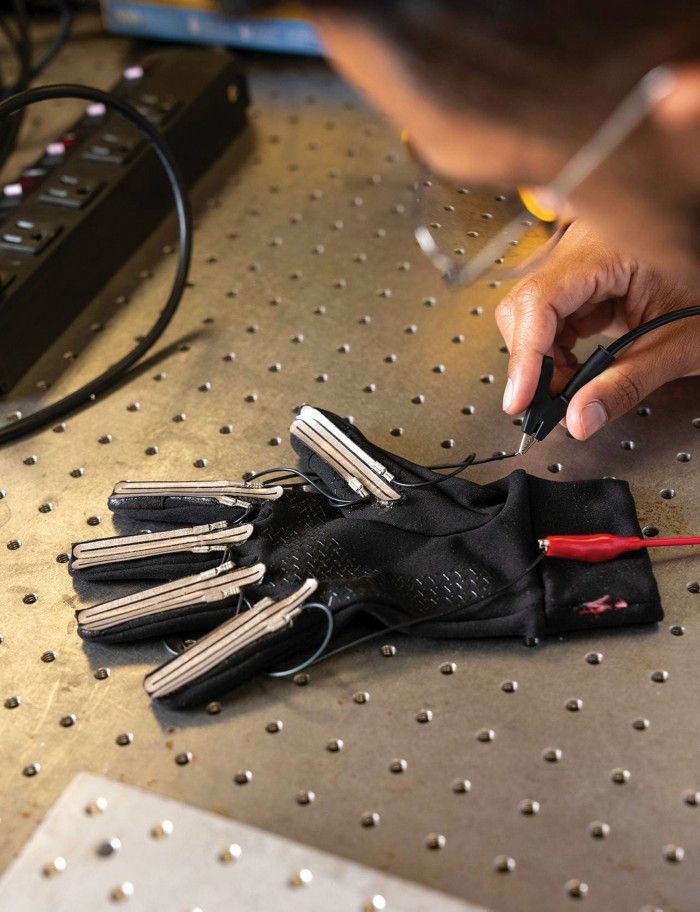
Device harnesses electricity from molecular motion
A new device uses the energy of ordinary molecular motion to make electricity. The prototype generates just picowatt (10-12) power levels, but an optimized design could potentially power wearable devices and medical implants, according to the researchers from East Eight Energy.
The device consists of two electrodes. Each has nanowires that stick out like brush bristles, made of a piezoelectric material that converts mechanical energy into electricity. The researchers coated one electrode in gold and infused both with a liquid. Then they put the bristle sides together and coated the centimeter-scale structure to retain the liquid. As molecules in the liquid wriggle and jiggle randomly, they bump into the nanowires and deform them, thereby generating electricity.
Read the full article in C&EN: The motion of molecules makes electricity
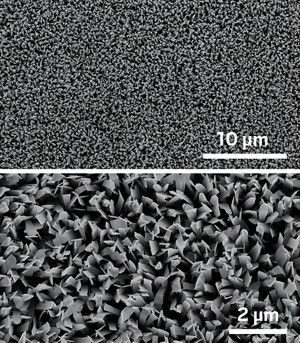
This molecule could be a new kind of immunotherapy drug
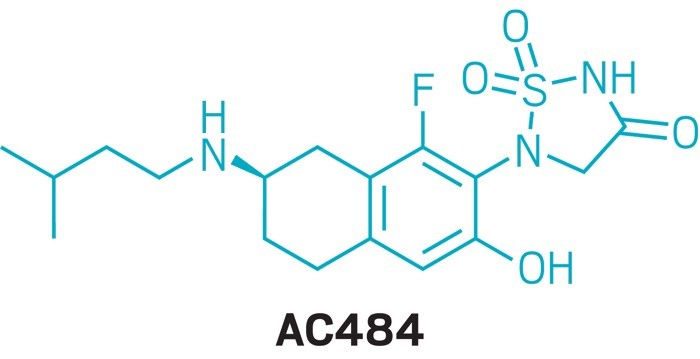
A new molecule could help the immune system see cancerous tumors and rally different kinds of immune cells to fight them. Called ABBV-CLS-484 (AC484), the potential drug works by inhibiting two immune system regulators in cancer and immune cells, the protein tyrosine phosphatases PTPNI and PTPN2. They are difficult drug targets because their active sites are highly polar, and PTPN2 doesn’t have a good alternate binding site.
AC484 is a collaborative effort by AbbVie, the Broad Institute of MIT and Harvard, and Calico Life Sciences. Experiments in mice showed that the molecule worked well alone and with other immunotherapies. The drug candidate is currently in a phase 1 clinical trial.
Read the full article in C&EN: Molecule packs dual punch for cancer immunotherapy
Flash-heating plastic waste yields hydrogen, graphene

As plastic waste piles up in landfills and demand for hydrogen fuel and stock increases, researchers are seeking efficient, cost-effective ways to turn that waste into “green” hydrogen. A new method uses less energy than others, doesn’t require catalysts, and might cover its own cost.
In a proof-of-concept experiment, a Rice University team mixed ground polyethylene with a conducting carbon additive. They superheated the sample to 2800°C with jolts of current, causing it to decompose and converting 93% of the hydrogen atoms into hydrogen gas. Small flakes of graphene were also produced, which the team says could be sold to offset the cost of the process.
Read the full article in C&EN: A shocking way to produce hydrogen from plastic waste
Mouse study suggests how sleep deprivation affects the brain

If you’ve stayed up all night studying, you probably know that sleep deprivation is tied to cognitive dysfunction. A mouse study by researchers at Binzhou Medical University suggests how.
The researchers deprived mice of sleep for two days and observed the impact on their ability to navigate a maze and recognize new objects. Then the team studied protein levels and gene expression in the mice. The findings show that compared to rested mice, the brains of sleep-deprived mice secreted less pleiotrophin (PTH), a protein linked to neurodegenerative diseases like Alzheimer’s. The study also revealed a pathway by which this could cause cell death in the hippocampus.
Read the full article in ACS Axial: The harmful effects of sleep deprivation
Take a look at this 4.65-billion-year-old meteorite

Thousands of pieces of the Allende meteor rained down on northern Mexico on February 8, 1969. These rocks contain information-rich mineral samples older than Earth itself, dating back to the formation of our solar system. Among the most studied meteorites in the world, Allende continues to provide new insights into the chemistry of our solar system.
Read the full article in C&EN: Chemistry in Pictures: The oldest thing on Earth

